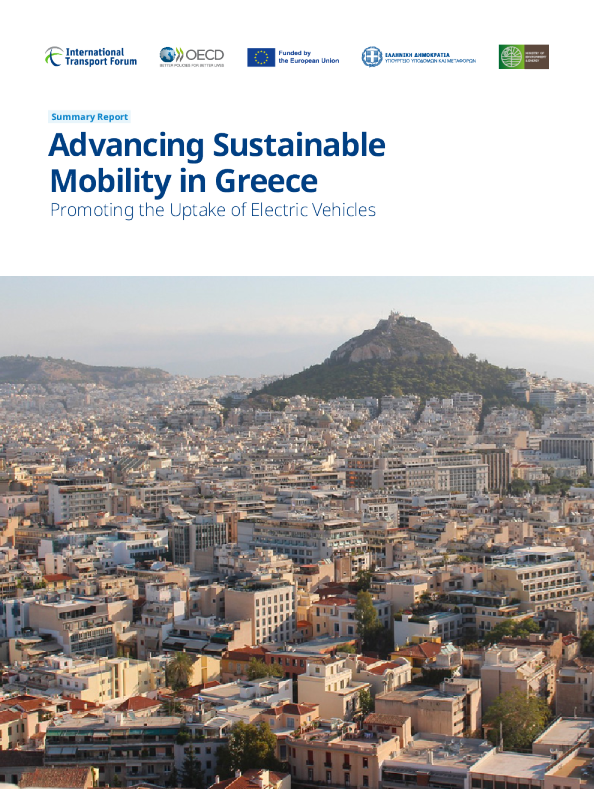The Contribution of Natural Gas Vehicles to Sustainable Transport
 AI智能总结
AI智能总结The Contribution of Natural Gas Vehicles to Sustainable Transport
Executive Summary
This working paper explores the role of natural gas vehicles (NGVs) in promoting sustainable transportation. It highlights the current status of NGV markets and technologies, environmental performance, economics, policy considerations, and case studies from various countries.
1. Introduction
The paper provides an overview of the International Energy Agency (IEA), its mandate, and the importance of NGVs in achieving sustainable transport goals. The IEA aims to ensure energy security, promote sustainable energy policies, improve market transparency, and support global collaboration on energy technology.
2. Current Status of NGV Markets and Technology
- Development of NGV Fleets and Retail Infrastructure: The number of NGVs worldwide has grown steadily, with significant increases in certain countries. The composition of these fleets varies, with some focusing more on passenger cars while others emphasize heavy-duty trucks.
- Technology and Performance: NGVs offer comparable performance to conventional vehicles but with lower emissions and operational costs. Key technologies include compressed natural gas (CNG) and liquefied natural gas (LNG).
3. Environmental Performance of NGVs
- Greenhouse-Gas Emissions: NGVs produce significantly lower greenhouse gas emissions compared to diesel and gasoline vehicles, making them a viable option for reducing carbon footprints.
- Local Air Quality: NGVs emit fewer pollutants, contributing to better local air quality. This is particularly beneficial in urban areas where air pollution is a major concern.
- Noise: NGVs are generally quieter than conventional vehicles, leading to reduced noise pollution.
4. Economics and Policy
- Fuel Prices: NGVs can offer cost savings due to lower fuel prices and higher efficiency. However, the initial investment in infrastructure and vehicles can be a barrier.
- Competitiveness of CNG: CNG is often more competitive than LNG in terms of cost and infrastructure requirements.
- Theory on NGV Policy: Effective policies can accelerate the adoption of NGVs, such as subsidies, tax incentives, and mandatory standards.
- Local Factors for NGV Policy: Local factors, including infrastructure availability, regulatory frameworks, and public acceptance, play a crucial role in the success of NGV policies.
5. Case Studies
- Brazil: Significant growth in NGV usage, driven by government incentives and favorable policies.
- India: Limited adoption due to infrastructure challenges and high upfront costs.
- Iran: Rapid growth in NGV usage, supported by government initiatives and favorable regulations.
- Pakistan: Slow adoption due to lack of infrastructure and public awareness.
- United States: Increasing interest in NGVs, particularly in the trucking sector.
- Europe: Mixed results, with some countries showing strong growth and others lagging behind.
6. Sustainable Pathways for NGVs
- Potential for Biogas Use in Transport: Biogas derived from organic waste can provide a sustainable and renewable source of energy for NGVs.
- Biomethane Projects in Europe: Several projects are underway to convert biogas into biomethane, enhancing the sustainability of NGVs.
- NGVs as a Pathway to Hydrogen: NGVs can serve as a stepping stone to hydrogen-powered vehicles, facilitating the transition to zero-emission transport.
7. Conclusion and Outlook
The paper concludes by emphasizing the potential of NGVs in promoting sustainable transportation. It suggests that with supportive policies and investments in infrastructure, NGVs can play a significant role in reducing greenhouse gas emissions and improving air quality.
Abbreviations and Acronyms
- CNG: Compressed Natural Gas
- LNG: Liquefied Natural Gas
- NGV: Natural Gas Vehicle
References
- [List of references]
Figures
- Figure 1: Total number of NGVs worldwide
- Figure 2: Composition of fleets
- Figure 3: Growth of NGV fleet in selected countries
- Figure 4: Estimated annual natural gas consumption by NGVs





